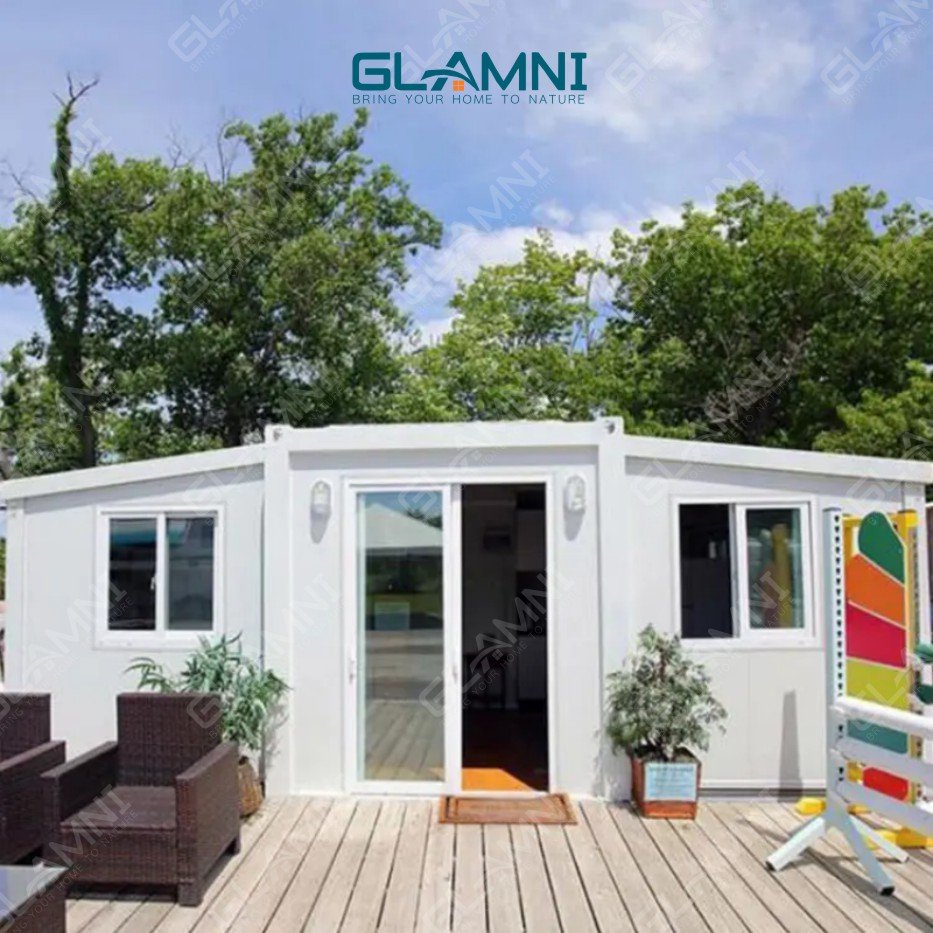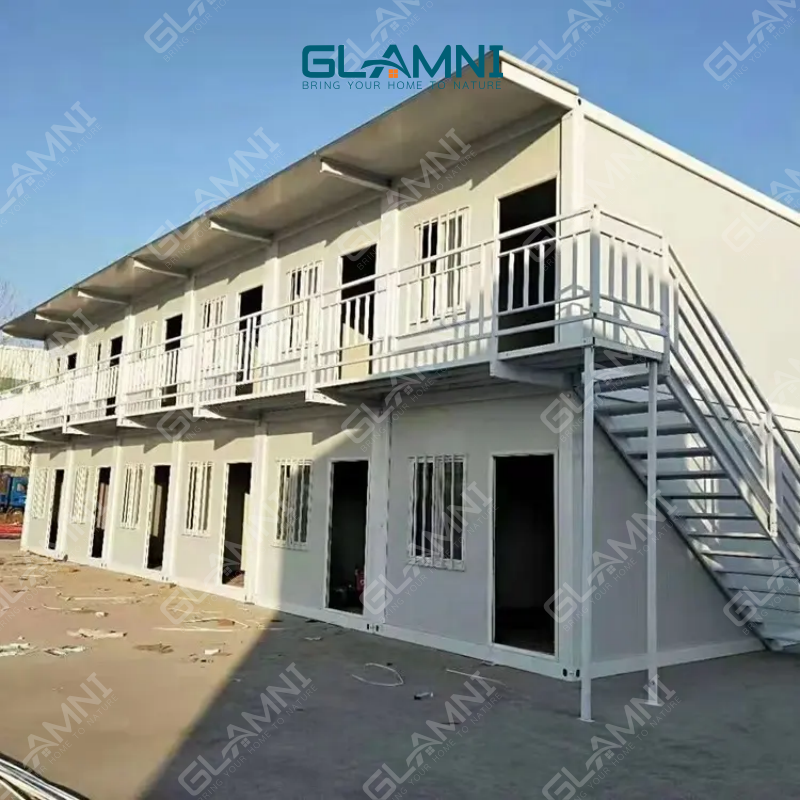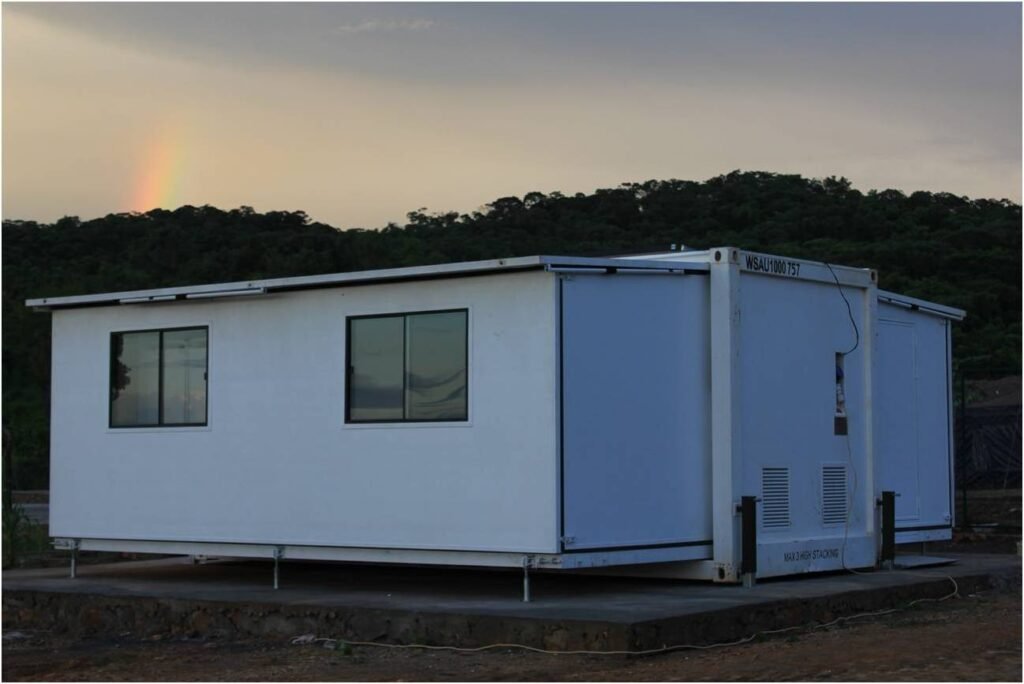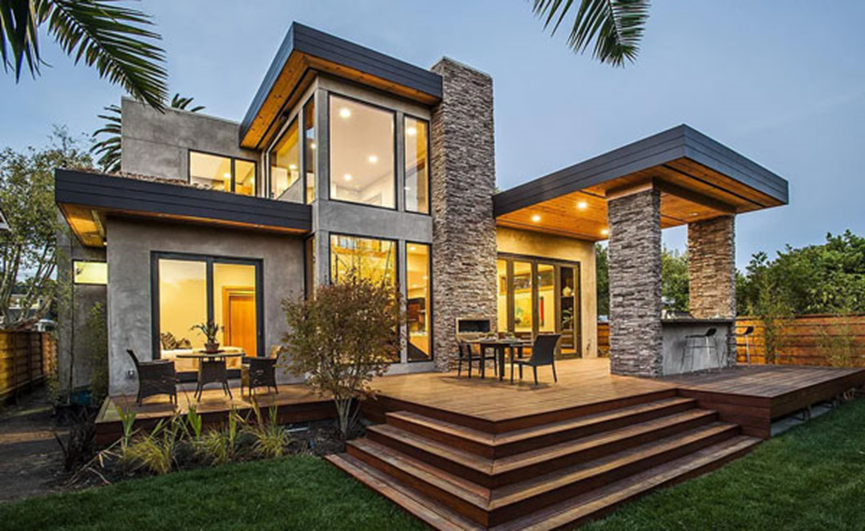Safety always comes first in life and a house is meant to keep us safe. So, getting the question like “Do container houses really protect us the same way as traditional houses?” is really very fair.
Container homes can be as durable and safe as traditional houses but only if they are built with the right standards. These houses must be made of heavy duty steel, solid welding and carefully designed. Their frame must also be coated properly to resist rust for years.
When all these things are done properly, container homes stand strong against storms, resist fire, block pests and even keep intruders away. So, instead of stressing about if a container house is safe, the better question is to ask “How safe can they be when they are built the proper way?” so you can verify your own.
Now, let’s break down those features(one by one) that make them safe .

1 How a strong steel frame protects container houses
In early days, original containers were designed to carry 26+ tons of cargo on ships. Those containers had very thick steel frames and walls, so they withstood storms at sea. Therefore, modern container houses:
➔ Use heavy steel structures like weathering steel beams and weld them fully. This steel lasts long sea journeys. Reinforced welding at corners gives the container house a solid load-bearing frame. The result is a core structure that holds heavy weights and stays rigid under stress.
➔ Handles high winds and earthquakes very well. As their steel frame and corrugated walls flex instead of breaking. Experts note these homes can survive winds up to 175 mph, far above many conventional designs. In fact, stacked containers full of cargo have been seen intact after hurricanes. Anchoring containers to a strong foundation spreads wind forces over the structure.
➔ Built to last for decades. Because the corten steel used is rust-resistant by design. With paint or cladding, a container house can stand for 30 years or more. This steel even resists corrosion in rain.
2 Fire safety in a modular container house
Because steel does not burn easily, container homes start with a fire-resistant shell. Still, builders add other fire safety features inside. For example: they install non-combustible wall panels (often rock-wool sandwich panels) in the container walls. High grade rock wool is A-rated for fire and is proven to resist flames.
In tests: 75–100 mm rock-wool panels in container walls passed 2 hour fire tests. That means if the fire breaks out inside, their walls will hold back heat and flames for hours. So, these houses have:

- Non burning wall panels: The house uses fire rated panels (rock wool or similar) inside the walls. These panels don’t burn easily. This stops a fire from spreading from room to room.
- Fire rated floors: Flooring systems for containers can also be fireproof. Builders often use PVC or other Class-B1 vinyl floors that resist flames. In testing: complete floor/roof assemblies lasted 1.5 hours under fire exposure. This gives extra escape time if a fire breaks out.
- Smoke alarms and extinguishers: All container houses come with early warning devices. Smoke detectors and fire extinguishers are fitted throughout. This follows best practices for safety. If a fire starts, alarms alert people immediately so they can act fast.
3 Security features in a shipping container house
- Tough locks and hinges: Containers were built to secure cargo, so their doors have strong locks and hinge systems. Homeowners keep the factory lock box or add heavy duty deadbolts on entry doors. The original container door can even be locked from outside when residents leave. Since the containers were designed to stop theft of goods, they are extremely hard to open. So, installing high quality hinges and padlocks on the doors and access points deters robbery.
- Secure double glaze windows: Many container houses use heavy framed windows. Some use double glazed (two pane) windows for extra protection. The thick aluminum frame and two layers of glass not only insulate but also resist break-in attempts. This window design is harder to open or smash than a single-pane window. It also blocks outside noise and lets the home stay quiet and private.
- Steel walls for extra protection: Beyond doors and windows, the whole structure is steel. There are no wood studs or siding for thieves to exploit. The solid metal shell itself deters break-ins. In fact, containers are essentially “airtight, impenetrable” storage units. Therefore, intruders cannot easily see or cut through the heavy corrugated steel. This strong metal barrier means a container home has natural fortress-like protection.

4 Design details that keep pests out of container home
- Sealed joints block bugs: Workers seal every seam and gap with caulk, silicone sealant, or rubber gaskets during construction time. This sealing closes tiny cracks that insects or spiders might crawl through. Good sealing around windows, doors and at welded joints means bugs stay outside. Routine caulking of joints (especially in the roof and corners) prevents ants, roaches or other pests from entering the living area.
- Steel shell stops termites and rats: The container’s all-steel construction offers no wood for bugs to eat. Also, termites and carpenter ants have nothing to chew. In fact, the solid steel creates an “impenetrable barrier” against rodents and termites. Rats, mice and insects simply cannot gnaw through the metal walls. With no wooden framing inside or out, the container stays termite-free by design.
- Simple upkeep for a pest free home: Homeowners can keep pests away by regular cleaning and inspection. For example: cleaning gutters, removing leaf piles and checking vents each year stops nests. Inspecting seals and repainting rust spots prevents holes. Also, using indoor traps or screens on vents can block any small critters. These simple chores (done annually) keep the container’s tight seal intact.
5 Staying comfortable in a prefab container house
Prefab container houses can be cozy year-round with proper insulation. Here’s how:
First, add thick wall and roof insulation. Containers can get very hot or cold without insulation. To solve this, professionals install thick insulation inside the walls and roof. Spray foam, foam panels or rock wool is applied to the 2″ interior of the metal shell. This insulation stops heat from entering in summer and keeps warmth in during winter. Also, this makes the container like a normal house in any climate.
Next, insulate floors for all seasons. Builders often lay insulation boards under the floor panels or use underlayment. This prevents the steel floor from feeling cold underfoot. In cold weather, it keeps feet warm; in heat it blocks ground heat. For example: covering the container’s wood floor with thick wool rugs can trap heat and make the space feel cozy.
Lastly, ready for A/C and heating. Prefab container modules mostly come prepared for HVAC. The builder may pre-cut or include channels for air ducts and wiring. This saves a lot of work when you add cooling or heat. You simply install ducts in the prepared spaces and connect the system. Many owners install standard home systems: mini-splits, central air or electric heaters.

6 Healthy building materials for container home
Safe living in a container house starts with the materials that keep indoor air clean. Because old shipping containers may have held cargo long ago, so owners mostly replace the original floor or coatings.
Today’s builders use certified low-toxin materials throughout. For example: many modern container conversion companies source wood products and fixtures with “SGS Verified” or other safety labels. These products have been tested for low formaldehyde and chemical emissions. Using tested, low-emission panels and insulation helps avoid introducing harmful substances indoors.
The next is painting and sealing. Many builders now use low VOC, water-based paints and finishes instead of industrial paints. Normal paints can release smelly VOCs (Volatile Organic Compounds) that cause headaches or allergies. But low VOC paints release very few or low fumes, so they don’t pollute the indoor air. That’s why container houses usually use low or zero VOC paints and sealants during conversion. This keeps the air fresh and reduces odors. As a result, there are fewer fumes and irritants inside.
Overall, by choosing safe materials, a container house becomes a clean and healthy place to live. As a container house built with low-toxin boards, safe insulation and low-VOC coatings gives you fresh air to breathe.
Conclusion
The sum up is: container houses can be safe like any other house when built with care. Their safeness depends on the strength of the steel frame and the welding of joints that give rock-solid durability. Extra safety steps like fire safe panels, alarms and strong locks provide more protection.
If you plan to live in a shipping container house, be sure to ask glamni about the quality of steel, fire-proofing and sealing. This way you can be sure that your container house is prepared for comfort in all situations.


